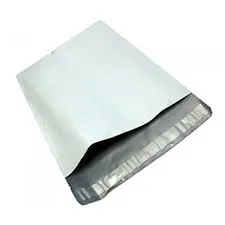chocolate packaging paper
The Importance of Chocolate Packaging Paper
Chocolate is one of the most beloved treats worldwide, and its appeal extends beyond taste to the entire sensory experience surrounding it. A crucial aspect of this experience is chocolate packaging paper, which serves multiple vital functions, from protection to marketing.
Firstly, the primary role of chocolate packaging paper is to protect the product. Chocolate is delicate and susceptible to a variety of external factors, including moisture, temperature fluctuations, and light. Packaging paper acts as a barrier, safeguarding the chocolate from these potential threats. High-quality packaging materials prevent the chocolate from melting or absorbing unwanted odors, thereby preserving its freshness and flavor. With the right packaging, the chocolate can maintain its optimal texture, whether it is smooth milk chocolate or rich dark chocolate.
Beyond protection, chocolate packaging paper plays a significant role in the overall presentation and marketing of the product. In a market overflowing with options, the packaging design can be a deciding factor for consumers. Eye-catching designs, vibrant colors, and attractive graphics can draw attention to a product on the shelf. Sustainable packaging materials, like biodegradable or recyclable paper, can also resonate with environmentally conscious consumers, enhancing the brand's appeal. Companies often invest heavily in branding efforts; a well-designed package can convey quality and luxury, creating a lasting impression that encourages repeat purchases.
chocolate packaging paper

Moreover, packaging serves as a communication tool between the brand and the consumer. Important information, such as ingredients, nutritional values, and ethical sourcing practices, are often printed on the packaging. This transparency builds trust and informs customers about what they are consuming. Special limited editions or seasonal packaging can also create a sense of urgency and exclusivity, prompting consumers to make a purchase before a particular design disappears from the market.
The tactile experience of chocolate packaging paper is another factor that adds to consumer enjoyment. The crinkling sound of paper, the weight in hand, and the visual aesthetic all contribute to the overall experience of indulging in chocolate. Even the aroma that can escape from freshly opened packaging plays a role in enhancing the consumer's delight. Brands often consider these sensory elements when designing their packaging to ensure that every aspect aligns with the luxurious experience of enjoying chocolate.
In recent years, the trend towards sustainability has led to new innovations in chocolate packaging paper. Many manufacturers are now exploring eco-friendly alternatives, such as recycled paper or plant-based materials. This shift not only appeals to changing consumer preferences but also addresses environmental concerns by reducing waste and carbon footprints associated with traditional packaging options.
In conclusion, chocolate packaging paper is far more than a simple wrapper; it is a multifaceted tool that ensures product safety, enhances marketing strategies, communicates important information, and elevates the overall consumer experience. As the chocolate industry continues to evolve, the role of packaging will undoubtedly become even more central, reflecting the growing demand for sustainability and creativity in product presentation. As consumers, we should appreciate the thought and innovation that goes into the packaging of our favorite chocolate treats, recognizing it as an integral part of what makes chocolate so delightful.
-
The Best Uses for Small Trash Bags in Daily LifeNewsJul.01,2025
-
Stylish Reusable Grocery Bags TrendsNewsJul.01,2025
-
Shipping Advantages of Using Bubble Envelopes BulkNewsJul.01,2025
-
How Compostable Mailing Bags Reduce Environmental ImpactNewsJul.01,2025
-
Environmentally - Friendly Bulk Poly MailersNewsJul.01,2025
-
Eco Friendly Custom Laminated Tote BagsNewsJul.01,2025
-
Have the freedom of customizing your custom mailers any way you want! Our dedicated packaging support will help deliver you the mailing experience you need to elevate your shipping experience to the next level! Start making a strong impression on your customers and stand out from your competitors! -
LIYA uses high quality raw materials which directly purchased from large enterprises domestic and overseas such as PetroChina, Sinopec, Sabic, Equate, ExxonMobil, Dow Chemical, Total, and Borouge, ensuring the price advantage and quality of the raw materials. -
LIYA uses high quality raw materials which directly purchased from large enterprises domestic and overseas such as PetroChina, Sinopec, Sabic, Equate, ExxonMobil, Dow Chemical, Total, and Borouge, ensuring the price advantage and quality of the raw materials.





